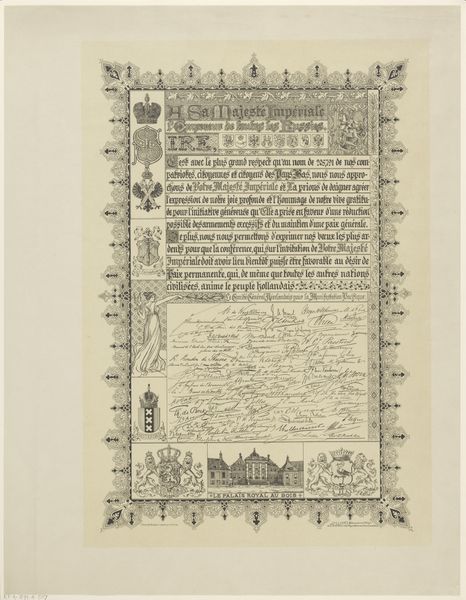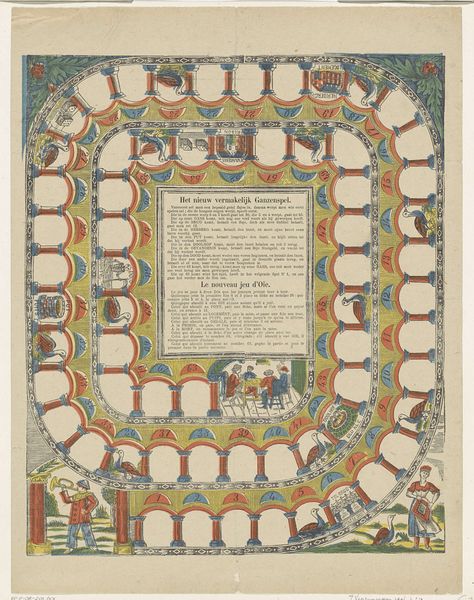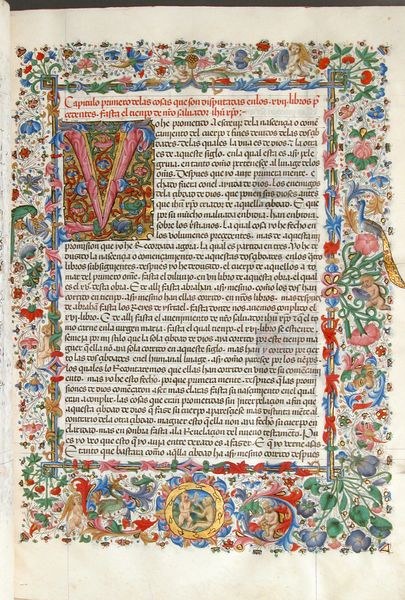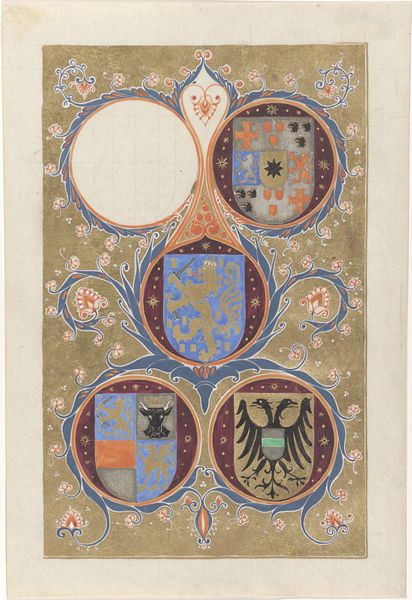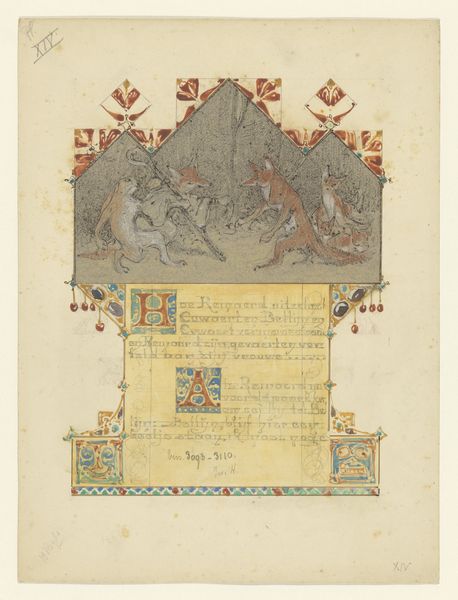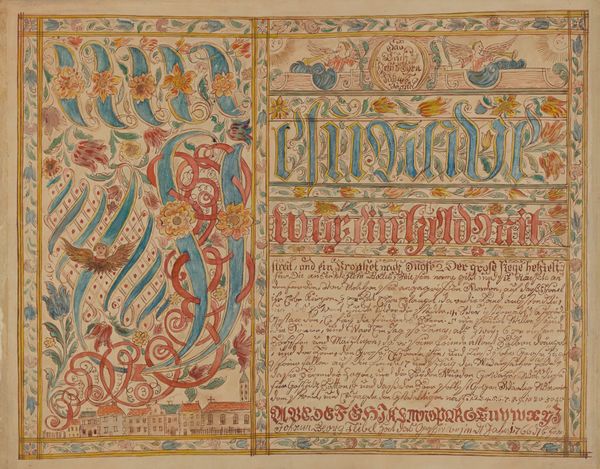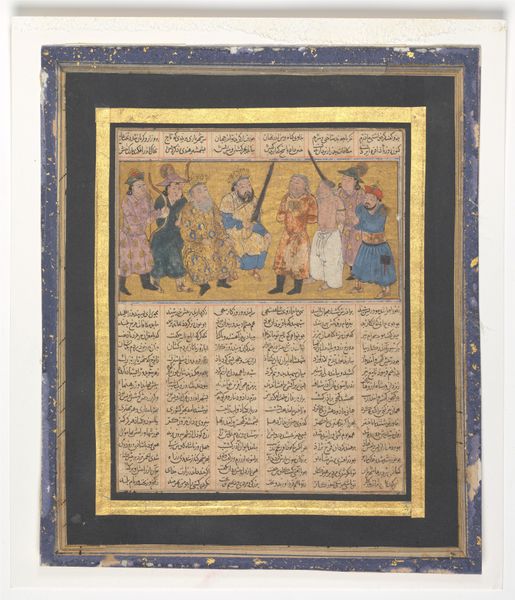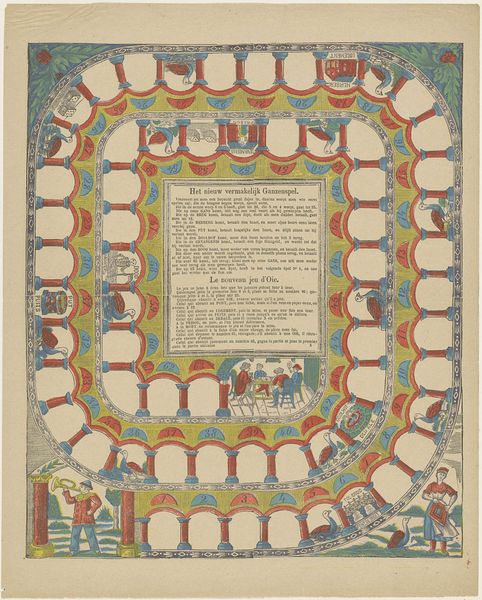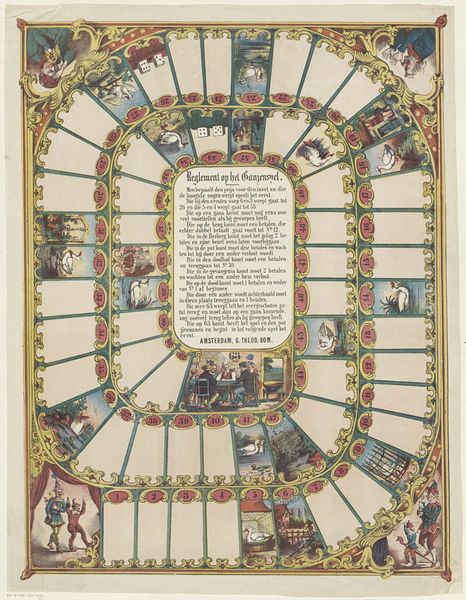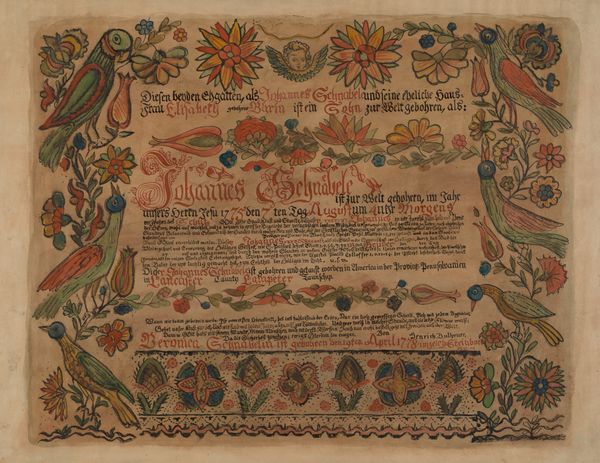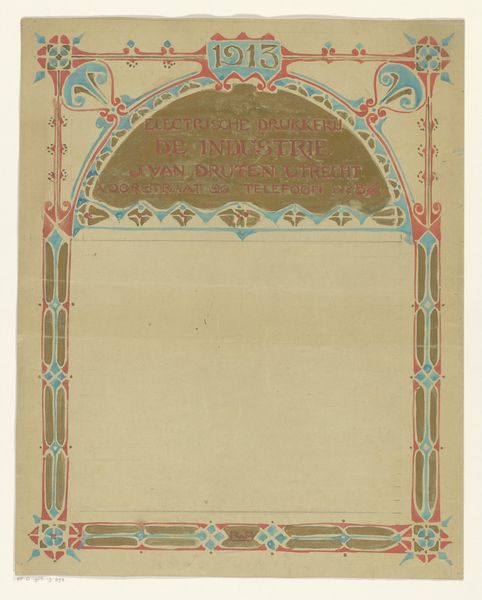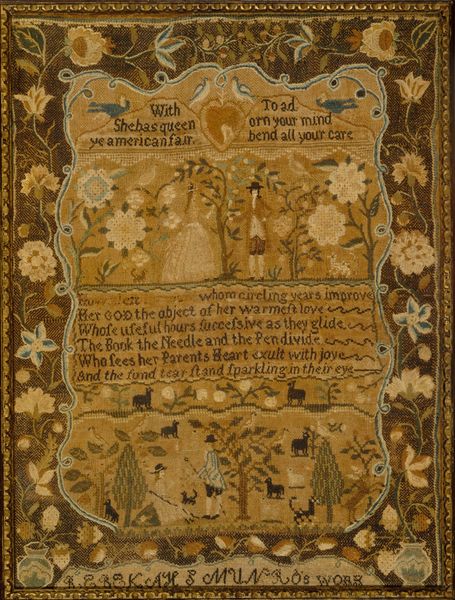
graphic-art, print, paper
#
portrait
#
graphic-art
#
dutch-golden-age
# print
#
paper
#
geometric pattern
#
tile art
#
geometric
#
geometric-abstraction
#
history-painting
#
academic-art
#
decorative-art
Dimensions: height 535 mm, width 375 mm
Copyright: Rijks Museum: Open Domain
Curator: Here we have "Stamboom van Juliana, koningin der Nederlanden," a genealogy or family tree of Queen Juliana of the Netherlands, created around 1926 by Tiete van der Laars. It's a print on paper, incorporating both graphic and decorative art styles. What are your first thoughts? Editor: It strikes me as intensely...hierarchical. It’s so meticulously ordered and compartmentalized. There's almost a clinical presentation to this record of royal bloodlines, like a formal registry, isn't it? Curator: Precisely. The structure underscores the importance of lineage in maintaining power and status. Family trees were potent political tools, visually legitimizing rule. Consider how carefully arranged all those geometric elements and crests are, visually building the case for her right to rule. Editor: And who is this “right” meant for? Lineage as validation only works within specific social structures, perpetuating a narrative where some bloodlines are inherently superior. I see these artistic flourishes more as ideological affirmations and political propaganda than just pretty décor. Curator: Yes, the artist is intentionally visually constructing this. Family trees have served the Dutch monarchy for a long time, being adapted in this way and put on display since the Golden Age. What's particularly striking is the blending of art and history. It’s not merely a factual record, but a symbolic representation. It also mirrors some popular approaches in academic art during the early twentieth century in Europe, too. Editor: But at what cost? Glorifying the past can justify contemporary inequalities, blinding us to how power operates beyond genetics. The artistic framing here—all that meticulous detail—risks glorifying a system rooted in historical exploitation. It reminds me of debates around memorialization of contested historical figures—who gets remembered and why? And who are left out of the frame? Curator: It is certainly more than meets the eye on the surface. It speaks to enduring themes in history, memory, power. And also illustrates perfectly how visual materials operate politically. Editor: I find it crucial to recognize the implicit values embedded in art, how supposedly neutral aesthetics can bolster harmful ideas about identity, power, and belonging, and why understanding context is important to understanding our world.
Comments
No comments
Be the first to comment and join the conversation on the ultimate creative platform.
